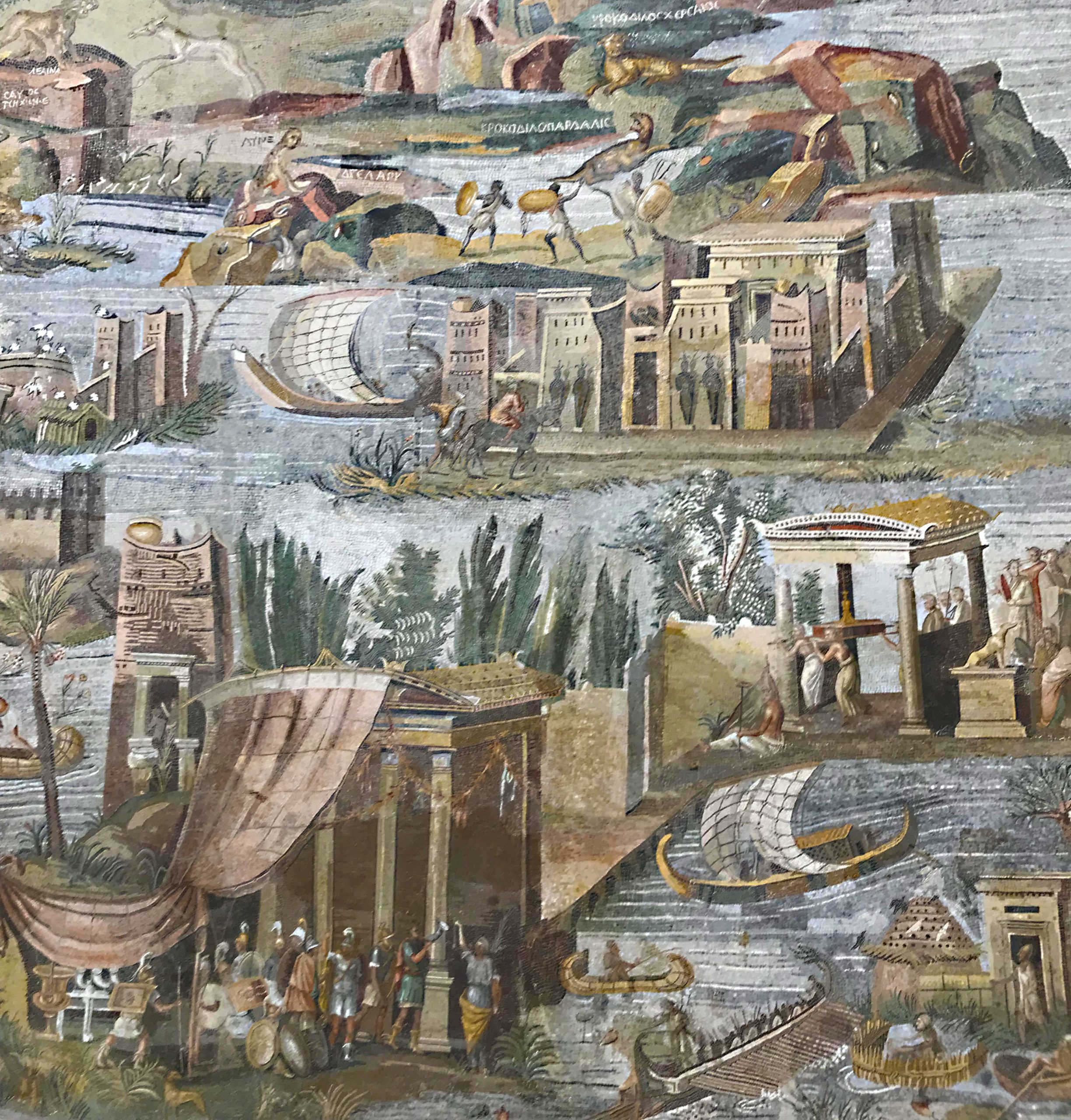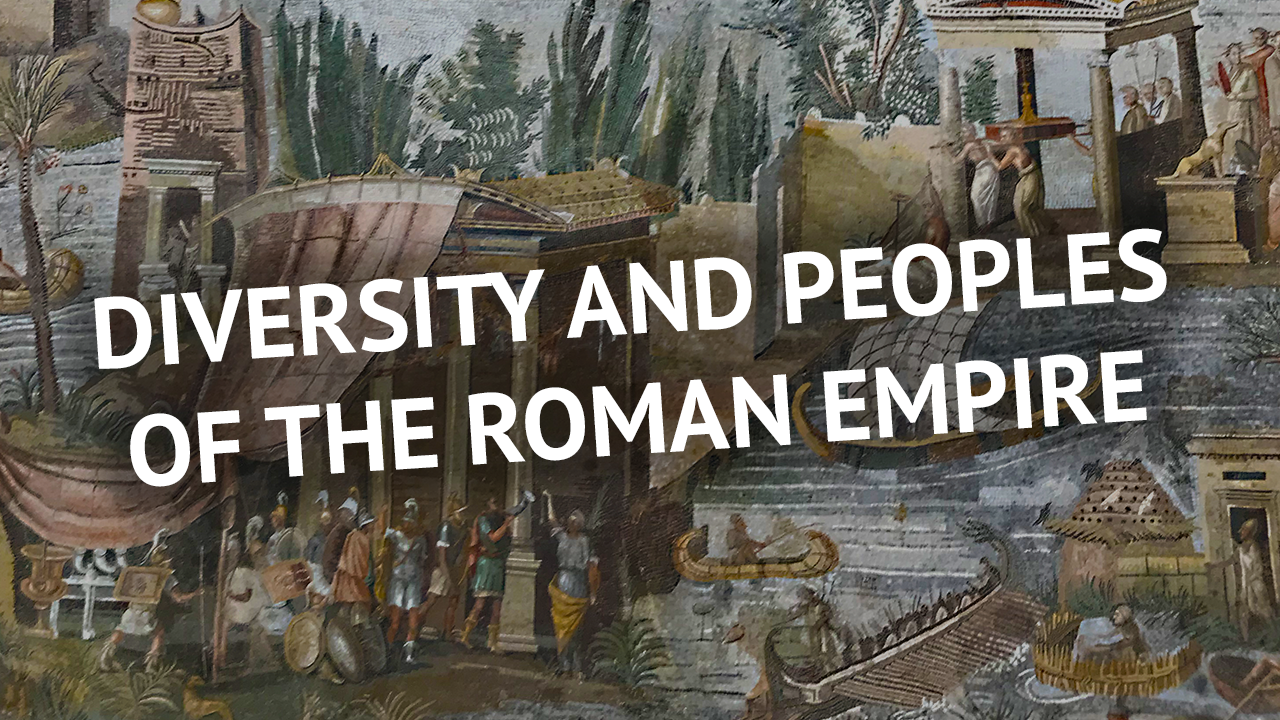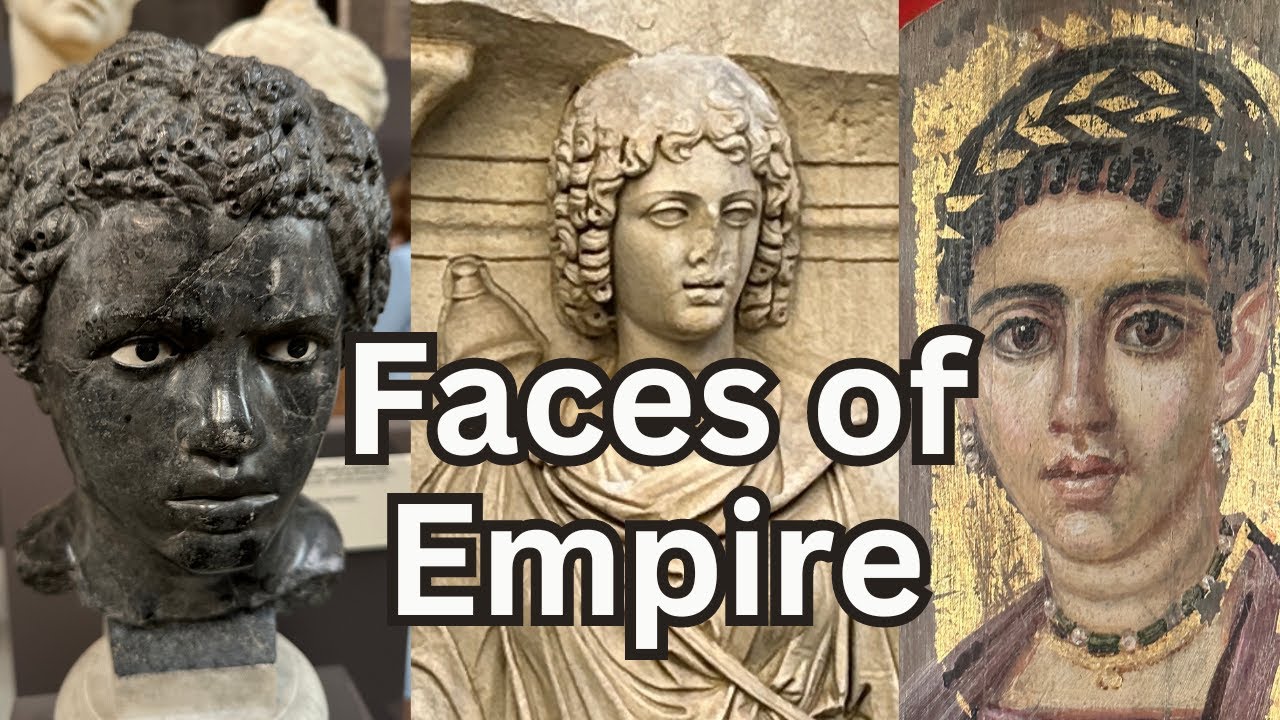The Roman Empire was incredibly diverse and heterogeneous, in terms of culture and people. During the reign of emperor Trajan in the early 2nd century CE, the territory reached its biggest extension. From the Iberic peninsula to the Persian Gulf, all across Europe and the coast of the Mediterranean Sea, reaching the British Isles and North Africa. Languages, traditions, and belief systems were exchanged, making the Empire a huge “melting pot” of different cultures.
Emperor Hadrian, who ruled from 117 to 138 CE, was famous for his travels around the empire. During his long reign of 31 years, he visited many cities located in modern-day France, Spain, Turkey, Britain, North Africa, Greece, and Israel. He was fascinated by Greek culture and promoted cultural exchange all throughout the Empire.
Hadrian is also an example of the nature of Roman citizenship. As well as his predecessor Trajan, he was born in the city of Italica, a Roman colony located in Spain founded in the 2 century BCE. Because their birth city had already received the Roman civitas, both were able to rise up the ranks and become emperors, even if they had not been born in the capital Rome. The edict of Caracalla, in 212 CE, bestowed Roman citizenship to every free inhabitant of the Empire.
The diversity of the Roman Empire is also manifested through artistic expression and material culture. Foreign groups and individuals were depicted with certain particularities in statues and reliefs. Specific clothing, different hairstyles, colored marbles, and different symbols and iconographies, for example. The artistic style of such pieces also carries a lot of the local traits from the place where it was made, even if the Hellenistic Graeco-Roman culture was predominant.
This grand diversity was also showcased in temples and buildings. The beautiful pavement of the Pantheon, still preserved today, was constructed with marbles and stones coming from multiple different regions conquered by the Empire. There are frescoes preserved in the ruins of Pompeii that tell the stories of foreign deities and mystery cults. The Roman religion was directly influenced and inspired by the Greeks and was also composed of many foreign gods, appropriated from the local culture of the different provinces.
There are pieces of evidence on the Roman cult of the goddess Magna Mater, originally from Turkey. The Egyptian goddess Isis was also venerated by ancient Romans, and there was a temple dedicated to her in the place where the Basilica of Santa Maria Sopra Minerva stands today, in the heart of the Campus Martius region. The cult of the Persian god Mithras was strongly disseminated as well. Underneath the Basilica of San Clemente, there is a Mithraic temple dated 1st century AD.
Bibliography
Frank, Tenney. “Race Mixture in the Roman Empire.” The American Historical Review 21, no. 4 (1916): 689–708. – https://doi.org/10.2307/1835889.
Hingley, Richard (2005) “Globalizing Roman Culture: Unity, Diversity and Empire”. Psychology Press – https://books.google.it/books?hl=pt-BR&lr=&id=vIw_c2gYUywC&oi=fnd&pg=PR13&dq=diversity+in+the+roman+empire&ots=jxli0FNFp0&sig=6B69Wp8LpH_uQytKdWUV2uiWmCM&redir_esc=y#v=onepage&q&f=false
Hingley, Richard (2009) ‘Cultural diversity and unity: Empire and Rome.’, in Material culture and social identities in the ancient world. Cambridge: Cambridge University Press, pp. 54-75. – https://dro.dur.ac.uk/8396/1/8396.pdf
Hope, Valerie (2013) “Status and Identity in the Roman World, in “Experiencing Rome: Culture, Identity and Power in the Roman Empire” edited by Janet Huskinson. Routledge Press, pp. 125-152 – https://books.google.it/books?hl=pt-BR&lr=&id=xQLYAQAAQBAJ&oi=fnd&pg=PA125&dq=cultural+identity+in+the+roman+empire&ots=7DXta2FFGA&sig=t7986g37IvEOB_4G06FSdfordus&redir_esc=y#v=onepage&q&f=false
Moore, Clifford Herschel (1909). “Individualism and Religion in the Early Roman Empire.” The Harvard Theological Review 2, no. 2 : 221–34. – http://www.jstor.org/stable/1507024
This content is brought to you by The American Institute for Roman Culture, a 501(C)3 US Non-Profit Organization.
Please support our mission to aid learning and understanding of ancient Rome through free-to-access content by donating today.
Cite This Page
Cite this page as: Darius Arya, The American Institute for Roman Culture, “Seminar – Diversity and Peoples of the Roman Empire” Ancient Rome Live.
License
Created by The American Institute of Roman Culture, published on 06/01/2020 under the following license: Creative Commons: Attribution-NonCommercial-ShareAlike. This license lets others remix, tweak, and build upon this content non-commercially, as long as they credit the author and license their new creations under the identical terms. Please note that content linked from this page may have different licensing terms.




